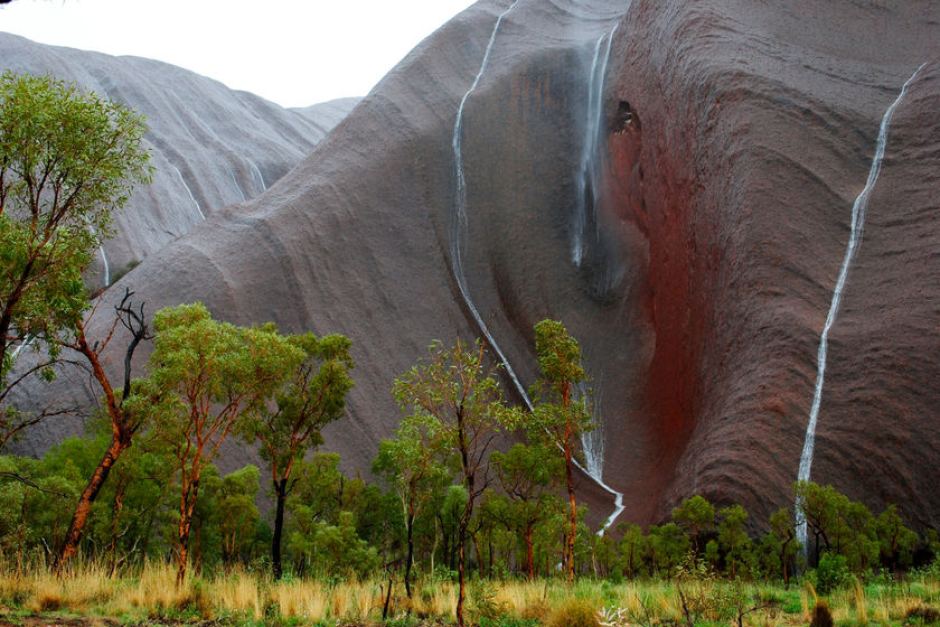Weather at Uluru
Weather at Uluru
Uluru is situated near the centre of a semi-arid desert, which most people would associate with a hot and dry climate. However, it surprises – in that the temperature can vary so dramatically. Temperatures can range from 5° C in July to 37° C in January.
What classifies a desert is the amount of rainfall it receives. On average Uluru-Kata Tjuta receives approximately 308mm (12 inches) per year. Not much at all. So you should consider it lucky if you get to see Uluru in the rain.
Uluru Weather Forecast
Temperature Range
Desert climate, average temperatures range from approximately 22 degrees Celsius (72 degrees Fahrenheit) in winter to 35 degrees Celsius (95 degrees Fahrenheit) in summer. Daytime temperatures during summer can exceed 40 degrees Celsius (104 degrees Fahrenheit).
For overseas visitors, Australian winter months are June, July, August and summer months are December, January and February.
Average Monthly Maximum Temperatures
| JAN | FEB | MAR | APR | MAY | JUN | |
| C° | 36 | 35 | 33 | 28 | 24 | 20 |
| F° | 97 | 95 | 91 | 82 | 75 | 68 |
| JUL | AUG | SEP | OCT | NOV | DEC | |
| C° | 19 | 23 | 27 | 31 | 34 | 35 |
| F° | 66 | 73 | 81 | 88 | 93 | 95 |
What to Pack
Mornings and nights during the months of May to September are particularly cold, we recommend you pack appropriate warm layered clothing, a warm jacket, beanie and scarf. Ensure to always pack sunscreen, lip balm and a hat for daytime activities. Learn more about what to pack on your outback adventure.
Water and Rain
Australia is a dry continent. About 70% of it is arid or semi-arid, receiving less than 500mm (about 20 inches) of rain per year, and most years it’s less than 250mm). Uluru-Kata Tjuta averages 308mm (about 12 inches) rain each year. Uluru-Kata Tjuta is a long way from the coast where most rain originates, and there are only a few large mountains in Central Australia to generate rain.
Why cyclones are good news
The rain that does fall is very unpredictable. Rain can fall any time in the year. Sometimes rain falls in winter when low pressure troughs moving across southern Australia extend north to Uluru to produce cold weather and occasional widespread rain. More rain falls in summer. This is usually from tropical depressions or ex-cyclones that have petered out after crossing the northern Australian coastline. The desert welcomes any rain.
Sunrise & Sunset Times
View the sunrise and sunset times for Uluru.


